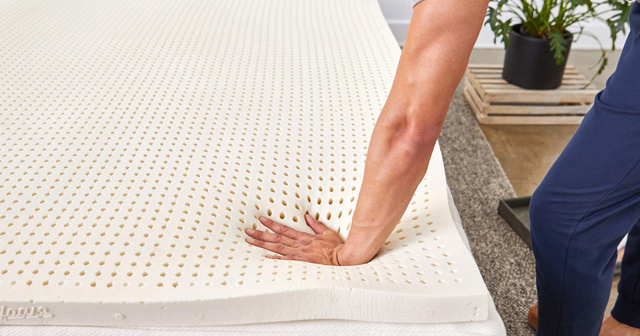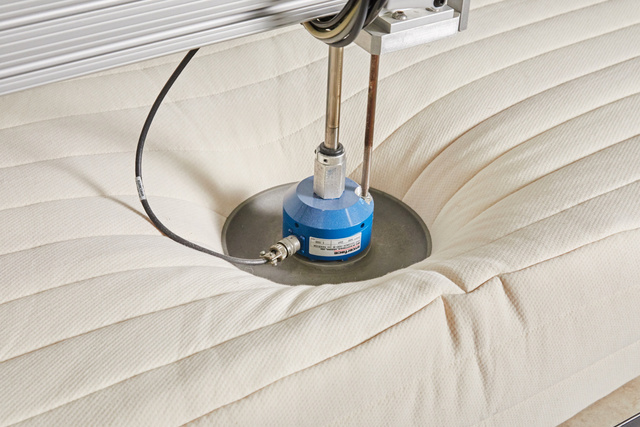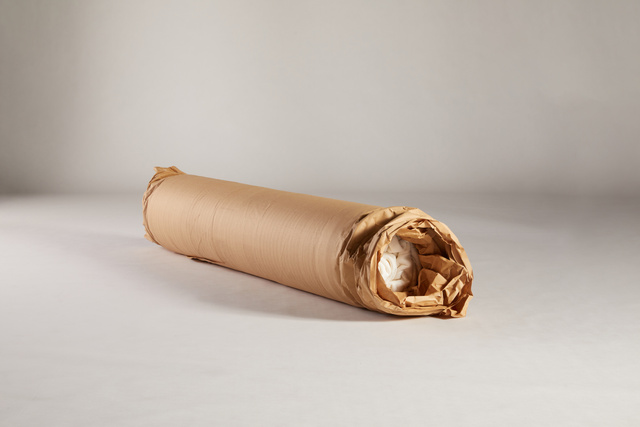Choosing between Polyurethane Foam, Memory Foam and Latex Foam
A buyer's guide to mattress foam materials.

Polyurethane foam, memory foam and latex foam are the three most common types of foam used in mattresses. While latex foam has seen a bit of a resurgence in recent years, most mattresses only contain memory foam and polyurethane foam. Interestingly, latex foam was very commonly used in mattresses prior to the introduction of polyurethane foam in the 1950’s.
We get a lot of questions about why we offer latex foam products but not offer polyurethane foam or memory foam products. We only sell latex foam products because we have a strong belief that latex foam is the best type of foam to use in mattresses and mattress toppers. Latex foam offers several significant advantages over memory foam and polyurethane foam.
Latex Foam
Latex foam is a foam produced by vulcanizing liquid latex into a solid foam. The vulcanization process cross links latex particles with sulfur through the application of heat and accelerators such as zinc oxide. Latex foam can be produced with natural latex, which is harvested from rubber trees or synthetic latex, which is produced from petrochemicals. All of the latex foam we sell contains only natural latex and never contains any synthetic latex.
Latex foam provides exact pinpointed support and reacts instantly to your every move. Latex foam does not “sink in” and “bottom out” as the night goes by. It maintains constant support and does not get softer when warmer. This makes it extremely easy to move throughout the night without any sleep interruption. The pinpointed, contoured support allows certain areas of the body to sink further into the mattress while others are supported. This is especially helpful to side sleepers, as they require more give in their shoulder and hip but more support in their midsection.
Latex foam is one of the most durable types of foam available. Latex mattresses and mattress toppers long outlast those made with memory foam and polyurethane foam. We often hear stories from customers that have had latex mattresses last over 20 years. Latex foam scores highly on all foam durability tests which simulate long periods of use.
It is very common for natural latex foam to have emissions certifications. All of the foam used in our Pure Green 100% natural latex mattresses and 100% natural latex toppers is ecoInstitut and Oeko-tex class 1 (their most stringent class) certified. While synthetic latex foam can sometimes have certifications, it is not as common.
Polyurethane Foam
Polyurethane Foam (also known as poly-foam) is the least expensive and lowest quality foam used in mattresses and mattress toppers. People are often familiar with polyurethane foam as the type of foam used in sofa cushions or cheap “egg crate” mattress toppers. Polyurethane foam is made up primarily of compounds derived from petrochemicals.
Many mattress manufacturers use polyurethane foam as the top layer of spring mattresses. This is done primarily because polyurethane is very inexpensive, not because it is high quality. More recently, many online mattress retailers have begun using polyurethane foam as a base layer in their mattresses instead of using spring coils. Polyurethane foam can be compressed very easily due to it’s low density. This allows many online mattress retailers to save on shipping cost but also causes many of these mattresses to have short lifespans.
There are several different varieties and densities of polyurethane foam. Generally, higher density polyurethane foam is a bit more durable while low-density polyurethane foam can degrade very quickly (sometimes within a year). Even high density polyurethane foam is less dense than latex foam or memory foam. All polyurethane foam, no matter what density, will degrade faster than any latex foam of decent quality.
Polyurethane foam can add some softness and support, but it will not provide the same pinpointed support associated with memory foam or latex foam. Polyurethane foam tends to collapse much quicker when pressure is applied. Because of this, it does not provide the same pinpointed, contoured support that latex foam is known for.
Polyurethane foam rarely carries any emission certifications other than the certipur-US certification. This certification is often touted by mattress manufacturers. While the certipur-US certification is certainly a step in the right direction for the polyurethane foam industry, it lacks the credibility of the third party certifications such as ecoInsitut or Oeko-tex. It is a standard that was designed and is administered by the polyurethane industry itself. While the certipur-US certification does ban the use of certain types of fire retardant chemicals, it is very common for polyurethane foam to contain fire retardant additives.
Memory Foam
Memory foam (also known as viscoelastic polyurethane foam or tempurpedic foam) is a type of polyurethane foam that contains added compounds which change the way it feels. This gives it the "slow moving" properties that memory foam is known for. For example, it will hold your handprint for a few seconds when pressed. As with polyurethane foam, memory foam is made up primarily of compounds derived from petrochemicals.
Memory foam is usually denser and more expensive than regular polyurethane foam. Memory foam does provide much a more pinpointed feel than polyurethane foam. While it provides a pinpointed feel, it is not as supportive as latex foam. We commonly talk to people who have a memory foam mattress or topper but cannot stand the unsupportive, sinking feeling they experience on it. Covering memory foam is actually one of the top reasons that people buy our mattress toppers. Unlike latex foam, which responds instantly and provides constant support, memory foam responds slowly and sinks further the longer that pressure is applied to it. The sinking of memory foam makes moving during sleep more necessary, but the slow response of the foam makes it very difficult to move without sleep being disturbed.
Memory foam is also heat reactive, which means it absorbs heat and softens as it gets warmer. This adds to the “sinking” issues mentioned above. As the memory foam heats up from your body, it gets softer and sinks more. As your body sinks further into the foam, you get hotter. This continues until many wake up to find themselves hot and stuck in one spot of their mattress. Newer versions of memory foam exist, which are designed to reduce heat (often called “gel foam”). While these foams contain chemicals which make the surface of the foam feel cooler, many experience the same heat issues with gel foam.
Densities of memory foam can vary greatly. In general, higher density memory foam is more durable and of better quality. There are a lot of very inexpensive, low density memory foam toppers which are sold online. Many mattresses also contain this low density, inexpensive memory foam. Low density memory foam may work well for a few months after purchase, but it will degrade very quickly.
As with Polyurethane foam, certipur-US is typically the only certification that can is applied to Memory foam. It is very rare to find memory foam that has any other emission certification. As with polyurethane foam, memory foam is commonly made with fire retardant chemicals.
We believe in Latex Foam
We strongly believe that latex foam is, by far, the best type of foam to use in mattresses. Latex foam offers several significant advantages over Polyurethane foam and Memory foam. Because of this our products never contain any foam other than 100% natural latex foam. Because we place such a high priority on selling high quality products at fair prices, you will find that our products do not actually cost much more than others made with much lower quality materials such as memory foam and polyurethane foam.



